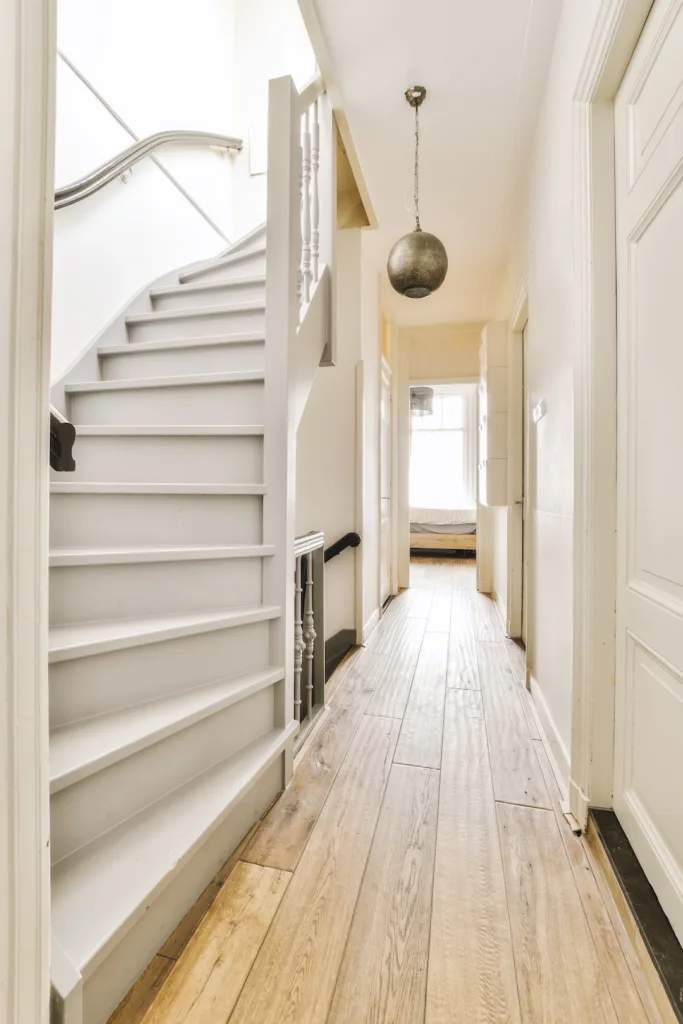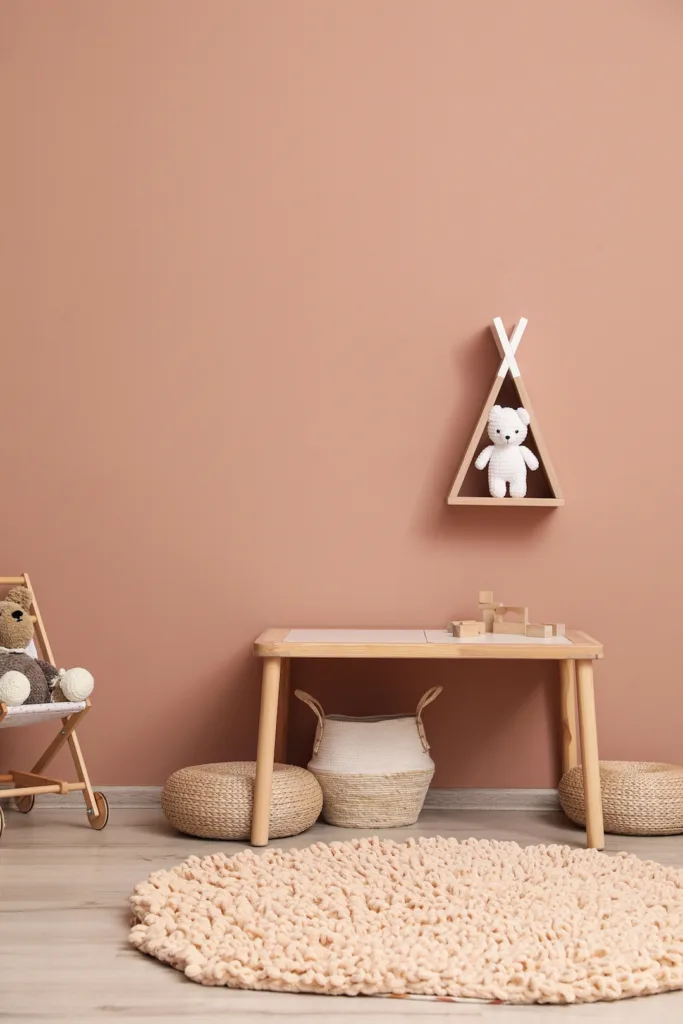Top 5 Benefits Of Interior Painting
Why should you paint the interior of your home?
If you’re considering painting the inside of your home, you may be wondering what benefits it can offer. While there are many potential benefits to interior painting, lets start with five of the top reasons why we have seen our customers choose to paint their homes:
1. Improve Home Appearance
Painting your home is one of the most cost-effective ways to get a big change in the look and feel of the space. It instantly makes any room look brighter, more inviting, and more clean – like getting a makeover without breaking the bank! Aside from boosting aesthetics, painting can have several tangible benefits too. It increases house value, covers up any chips or scratches on walls, and provides a layer of protection against moisture and rain damage. All in all, painting can help make your home look great for years to come.
A fresh coat of paint can do wonders for the appearance of your home, making it look clean and new again.
Embarking on a home improvement project can be both exciting and daunting. However, one of the most cost-effective ways to significantly alter the look and feel of your space is by painting it. A fresh coat of paint can instantly revitalize any room, making it appear brighter, more inviting, and impeccably clean. It’s akin to giving your home a makeover without straining your budget. The transformation a fresh coat of paint can bring is often dramatic, breathing new life into old spaces and making them feel brand new.

- Value Booster: A fresh coat of paint can significantly increase the look AND value of your house. If you're considering selling in the future, painting is an investment worth making.
- Comfort: It's not all about everyone elses opinion of your personal space, Carfagno Painting is a strong believer in the power of color on the comfort you feel inside of your home.
- Increased Inviting Appeal: Freshly painted rooms exude a warm and welcoming vibe. A well-chosen color palette can make your home feel more comfortable and inviting, making it a space where people love to gather and spend time.
2. Increase Home Value
Selling your home is a big decision, but if you’re thinking about it for the future, there are a few steps you can take to make sure you get peak market value. One of those steps is interior painting – with the right shade, texture and hue of paint, potential buyers will be able to see themselves settling into the space. Not only can painting create a cleaner overall feel in the house (especially if it hasn’t been done in a while!), it also covers up minor imperfections within the walls and gives an improved look. Paint is also relatively cheap when compared to other renovations that might need to be made prior to selling, making it an easy way to give your home a boost when putting it on the market!
When you’re planning to sell your home, every detail counts. One of the most cost-effective ways to increase your home’s value and appeal is by investing in a professional paint job.
-
First Impressions Matter: The first impression is crucial when selling a home. A fresh coat of paint can significantly enhance the overall appearance of your property, making it more inviting to potential buyers. As they say, “the first impression is the last impression.”
-
Personalization: A new layer of paint allows potential buyers to envision themselves living in your home. Neutral shades are often recommended as they are more likely to match a wider range of tastes and styles, increasing your home’s appeal to a broader audience.
-
Maintenance and Care: A well-executed paint job signals to buyers that the home has been properly maintained. This perception can add significant value as it reassures potential buyers that other elements of the home are likely to have been equally well cared for.
-
Covering Imperfections: Over time, walls can accumulate minor dings, scratches, and stains. Fresh paint effectively covers these imperfections, presenting a clean, well-maintained space to potential buyers.
-
Cost-Effective Improvement: Compared to other home improvement projects, painting is relatively inexpensive. Despite its low cost, it can have a dramatic impact on your home’s appearance, making it an excellent return on investment.
3. Protect Surfaces
Painting can be a great preventative measure to keep your belongings in good shape. For example, if you paint your wooden fence or the exterior of your house, it will prevent it from rotting due to humidity and other environmental factors. If you decide to decorate the inside of your home, painting can also protect surfaces from fading and wear and tear. Not only is it protective but it adds a touch of grandeur and style – being able to spruce up a room in just a few coats of paint is a far cry from having to undertake costly renovations! No matter what type of surface you’re looking to protect, painting can lend many advantages such as weather protection or even sound absorption. Just remember that after the first coat is applied, you’ll need two more according to traditional techniques!
Interior Protection
Inside your home, painting can safeguard surfaces from everyday wear and tear. Walls, especially in high-traffic areas, are susceptible to scuffs, smudges, and dings. A fresh coat of paint not only covers these imperfections but also provides a protective layer that helps prevent future damage. Additionally, certain types of paint can resist fading, keeping your walls looking vibrant even with exposure to sunlight over time.
Weatherproofing
One of the primary benefits of painting is its ability to protect against environmental damage. For instance, painting your wooden fence or the exterior of your house can help prevent rot caused by humidity, rain, and other weather conditions. Painting the interior of your home with a good paint cant protect your walls from moisture and a good quality paint creates a barrier that shields the material beneath from moisture, reducing the risk of decay and increasing the lifespan of the structure.

4. Create a Certain Mood
Learn More In Our Color Theory Resource
Picking the right color of paint for your home can make all the difference when it comes to setting the mood. Ever notice how a lighter shade of yellow or blue can give a room an airy, tranquil feel, while brighter colors like red or orange may create more energy and excitement?
You can have quite a bit of fun playing with color, so don’t be afraid to experiment; just take into consideration which atmosphere you’re trying to create in the space by choosing the perfect hue. As long as you remember the impact that color has on mood, you’ll be well on your way to decorating success!
Selecting the right paint color for your home can significantly influence the overall mood and ambiance of a space. This principle, rooted in color theory, is a fundamental aspect of interior design and decoration.
Lighter shades such as yellow or blue often impart a sense of serenity and spaciousness, making a room feel open, airy, and tranquil. On the other hand, vibrant colors like red or orange can inject energy and excitement into a space, stimulating conversation and activity.
The color of your paint can impact the mood in your home. For example, lighter colors tend to create a more relaxed atmosphere while brighter colors can be energizing.
Experimentation is key when it comes to selecting colors. Don’t be afraid to play around with different hues, shades, and color combinations. However, always keep in mind the mood you’re aiming to establish in each space.Consider factors such as the room’s size, the amount of natural light it receives, and its primary function.
These elements can guide your choice of paint color, helping you achieve a harmonious balance between aesthetics and functionality. For more insights on how to use color to enhance your home’s interior, check out our detailed post on color theory. Here, you’ll find a wealth of information on the psychological effects of different colors, tips for choosing the right paint color for each room, and much more.
5. Cover up imperfections in your walls
Painting your walls can be a great way to spruce up any room quickly and easily
Walls, like anything else in a home, can show signs of wear and tear over time. This might manifest as small dents, scratches, or even stains. Similarly, a renovation project might leave behind minor flaws such as uneven surfaces or patches of old paint. These imperfections, while small, can detract from the overall look of your space.
Fortunately, a well-executed paint job can effectively cover these blemishes. By carefully preparing the wall surface and applying the right type of paint, you can achieve a smooth, uniform finish that makes your walls look as good as new.
DIYer? Preparation and Application
The first step in covering wall imperfections is to prepare the surface. This may involve sanding down rough spots, filling in dents with a suitable filler, and cleaning the wall to remove any dust or grime. Once the wall is ready, apply a primer to ensure a smooth and even surface for the paint to adhere to.
Next, select a paint that’s suitable for your needs. Matte or flat finishes tend to be excellent at hiding minor flaws, as they don’t reflect light directly, which can highlight irregularities. On the other hand, glossy paints can make imperfections more noticeable, so they’re best used on smooth, flawless surfaces.
Finally, apply the paint with patience and precision. It might take a couple of coats to fully conceal blemishes and achieve a uniform finish. Be sure to allow each coat to dry thoroughly before applying the next one.
If You’re In New Jersey, Carfagno Painting is here to help!
Whether you’re looking to add some color and life to a room that feels a little too bland or want to completely transform the look of your space, painting is always a great option. It’s an affordable way to make a big impact and can be a fun weekend project if you have family or friends help out. Plus, you can choose any color you want to perfectly match your personality and style. And if there are any imperfections in your walls, a fresh coat of paint will easily cover them up.
Ready to get started? Give us a call for a free estimate!


